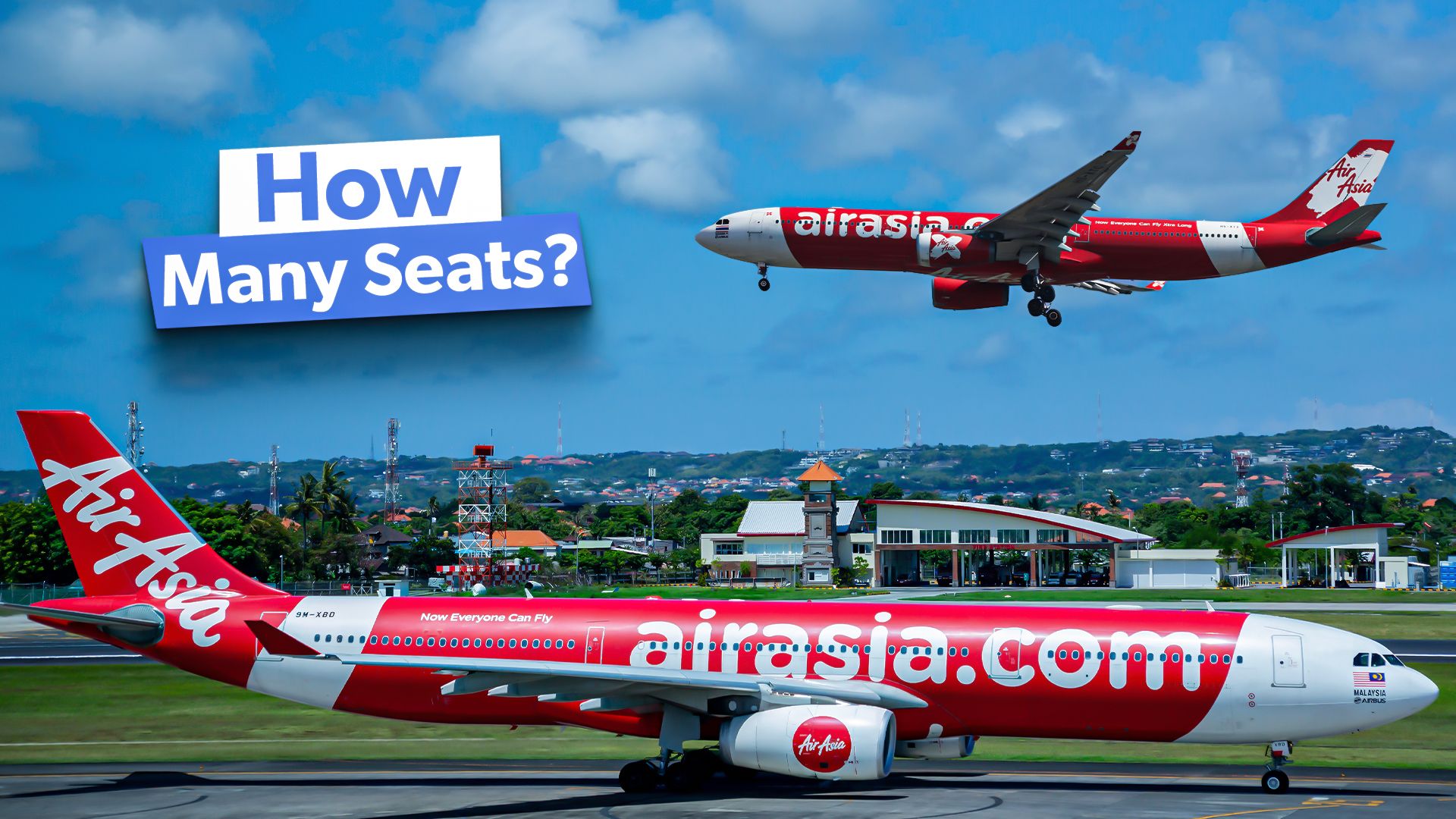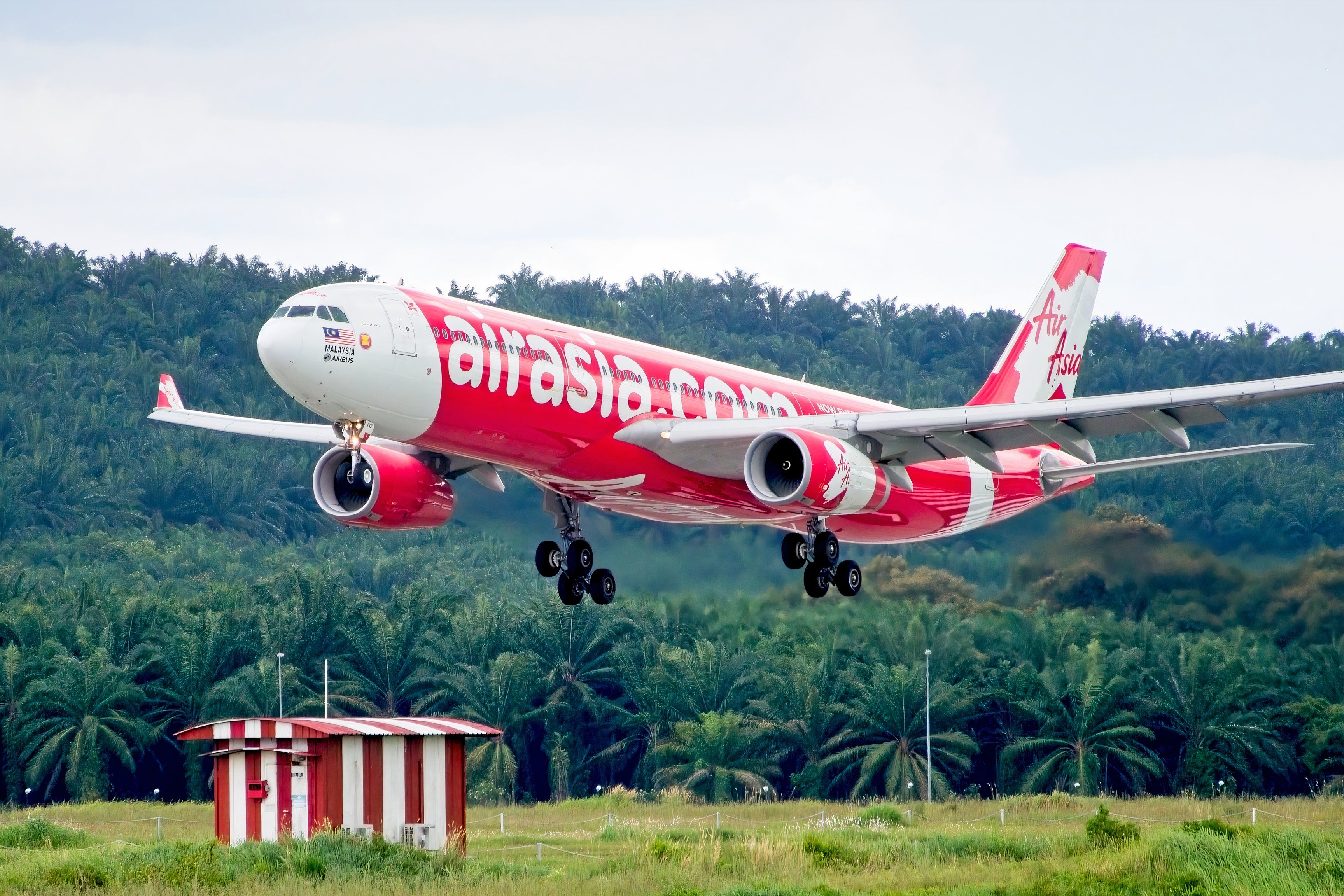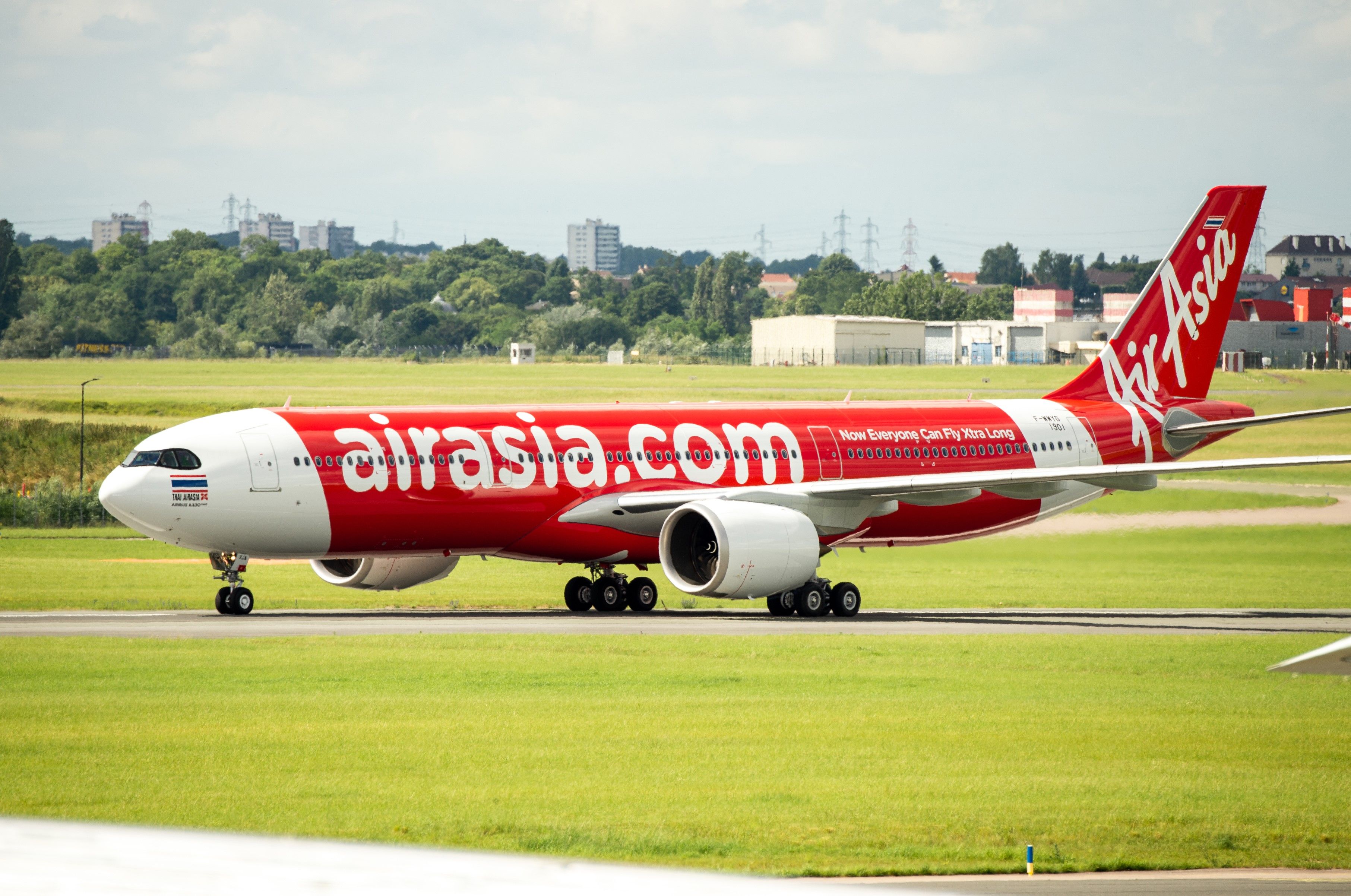Summary
- AirAsia X operates medium to long-haul flights with a fleet of Airbus A330-300 aircraft.
- Thai AirAsia X operates with fewer aircraft but serves prominent Asian destinations such as Sydney.
- Both AirAsia X and Thai AirAsia X offer exclusive seating areas for customers aged ten and above in a ‘Quiet Zone.’
One of Asia’s most popular low-cost carriers, AirAsia, has a long-haul brother called AirAsia X. While the carrier has previously been known as FlyAsianXpress, it commenced operations on November 2, 2007, from its hub at Kuala Lumpur International Airport (KUL) to the sunny Gold Coast Coolangatta Airport (OOL) in southern Queensland, Australia. Today, it continues to be the medium and long-haul operator for AirAsia.
Photo: Alphonsusjimos | Shutterstock
While it’s a low-cost-carrier, the onboard offering varies depending on the classes and add-ons you select, this article will dig into what you can expect onboard, but first, let’s understand where you can fly to with the carrier. Today, it operates a fleet of 15 Airbus A330-300 aircraft and serves destinations including:
|
Year-round destinations |
Almaty, Amritsar, Bangkok–Suvarnabhumi, Beijing–Daxing, Changsha, Chengdu–Tianfu, Delhi, Denpasar, Gold Coast, Hangzhou, Hong Kong, Melbourne, Nairobi–Jomo Kenyatta (from November 15, 2024), Osaka–Kansai, Perth, Sapporo–Chitose, Seoul–Incheon, Shanghai–Pudong, Sydney, Taipei–Taoyuan, Tokyo–Haneda, Xi’an |
|---|---|
|
Seasonal destinations |
Jeddah, Kota Kinabalu |
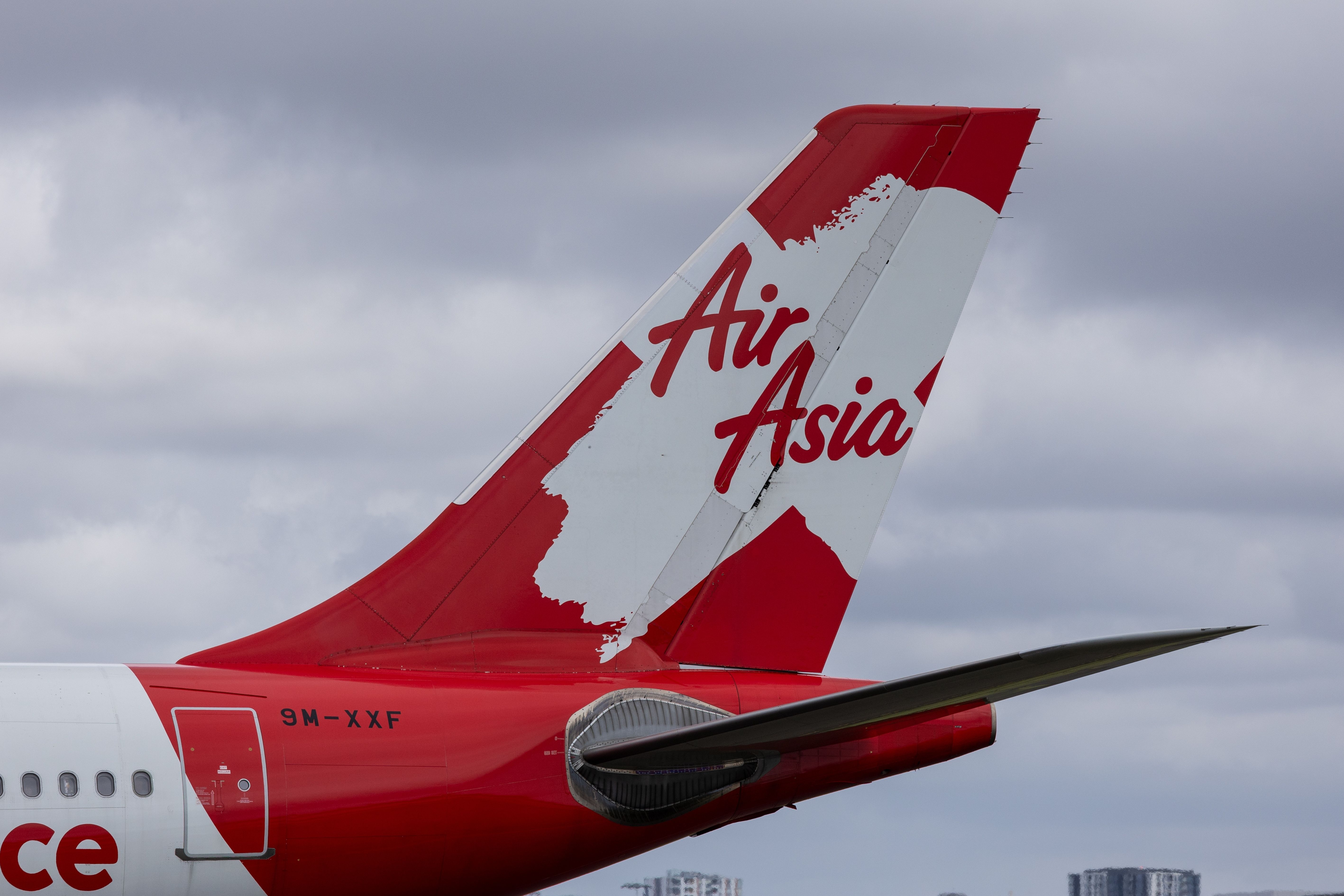
Related
Flight Review: AirAsia X Airbus A330 From Bali To Kuala Lumpur
For this two-and-a-half-hour flight, I opted for AirAsia’s long-haul arm, AirAsia X.
Did you know that Yoshiki, a Japanese rock band X Japan leader, inspired the airline’s name?
A bit of history
In May 2007, AirAsia’s Tony Fernandes announced his intentions to commence low-cost flights between Malaysia and Australia. Fernandes quickly pointed out he would initially avoid significant airports due to their high fees, which wiped Sydney (SYD) and Melbourne (MEL) off the airline’s radar.
Instead, the carrier concentrated on cheaper, leisure-focused alternatives, which included Melbourne Avalon (AVV), Newcastle (NTL), the Gold Coast (OOL), and Adelaide (ADL).
As the airline’s popularity and expansion grew, two additional offshoots of the long-haul carrier were born, including a joint venture that inspired Indonesia AirAsia X, operating select flights from Bali Ngurah Rai International Airport (DPS) to destinations including Melbourne and Taipei.
It was launched in 2015 but ceased operations just four years later (2019). Thai AirAsia X was another joint venture launched in 2014, which services Bangkok to Seoul, Tokyo, and Osaka. Today, it operates at Bangkok Suvarnabhumi (BKK) but will relocate its operations to Don Mueang International Airport (DMK) from October 1. Its network includes:
- Nagoya–Centrair
- Osaka–Kansai
- Seoul–Incheon
- Shanghai–Pudong
- Sydney (begins 1 December 2024)
- Tokyo–Narita
Photo: Airbus
What to expect onboard
This section will examine the AirAsia X and Thai AirAsia X fleets and their configurations, broken down for each aircraft currently in operation. All aircraft are Airbus A330-300s. Data has been retrieved from ch-Aviation, an online aviation database.
AirAsia X (D7)
|
Aircraft registration |
Business class seats |
Pitch |
Premium economy |
Pitch |
Economy |
Pitch |
|---|---|---|---|---|---|---|
|
9M-XBF |
18 |
44″ |
24 |
38″ |
267 |
22″ |
|
9M-XBG |
18 |
44″ |
24 |
38″ |
267 |
22″ |
|
9M-XBH |
30 |
60″ |
– |
– |
255 |
32″ |
|
9M-XBI |
30 |
60″ |
– |
– |
255 |
32″ |
|
9M-XXE |
12 |
59″ |
– |
– |
365 |
31-32″ |
|
9M-XXF |
12 |
59″ |
– |
– |
365 |
31-32″ |
|
9M-XXG |
12 |
59″ |
– |
– |
365 |
31-32″ |
|
9M-XXJ |
12 |
59″ |
– |
– |
365 |
31-32″ |
|
9M-XXK |
12 |
59″ |
– |
– |
365 |
31-32″ |
|
9M-XXQ |
12 |
59″ |
– |
– |
365 |
31-32″ |
|
9M-XXR |
12 |
59″ |
– |
– |
365 |
31-32″ |
|
9M-XXU |
12 |
59″ |
– |
– |
365 |
31-32″ |
|
9M-XXV |
12 |
59″ |
– |
– |
365 |
31-32″ |
|
9M-XXW |
12 |
59″ |
– |
– |
365 |
31-32″ |
|
9M-XXZ |
12 |
59″ |
– |
– |
365 |
31-32″ |
As identified, the fleet has three different configurations, which allows the carrier to adapt depending on market demand. Previously, the airline operated two Airbus A340-300S, which it received from Air Canada. However, these have now been retired. Looking at new horizons, the airline will welcome up to 15 Airbus A330-900 from 2026, destined to replace some of the airline’s aging A330-300s.
Thai AirAsia X (XJ)
While Thai AirAsia X has a smaller fleet than its Malaysian counterpart, its impact still packs a punch. The carrier operates eight Airbus A330-300 to several Asia destinations. Sydney, Australia, is destined to be its next new port of call, with the route starting this December. Its fleet consists of:
|
Aircraft registration |
Business class seats |
Pitch |
Premium economy |
Pitch |
Economy |
Pitch |
|---|---|---|---|---|---|---|
|
HS-XTA |
12 |
59″ |
– |
– |
365 |
31-32″ |
|
HS-XTC |
12 |
59″ |
– |
– |
365 |
31-32″ |
|
HS-XTE |
12 |
59″ |
– |
– |
365 |
31-32″ |
|
HS-XTG |
38 |
60″ |
– |
– |
262 |
32″ |
|
HS-XTH |
– |
– |
– |
– |
367 |
30-34″ |
|
HS-XTI |
30 |
60″ |
– |
– |
255 |
32″ |
|
HS-XTN |
18 |
60″ |
33 (Hot Seats) |
34″ |
312 |
31-32″ |
|
HS-XTO |
12 |
59″ |
– |
– |
365 |
31″ |
Hot seats? On selected A330s, the airline offers Hot Seats, a version of the economy Plus. These seats include extra legroom up to 17.5″, giving you more room to stretch out on your next flight. Priority boarding is included in this fare.
The carrier across AirAsia X and Thai AirAsia X fleet has an additional offering called ‘Quiet Zone.’ This is an exclusive seating area between rows 7-14 and is only available for guests who are ten years old or above.
The benefit of this offering is that customers are treated to minimal noise disturbances and are strategically located behind the premium cabin. Customers are quickly disembarked and receive their meals before the economy cabin. Gentle ambient lighting also means that customers arrive rested and relaxed. You can select Quiet Zone at the time of booking.
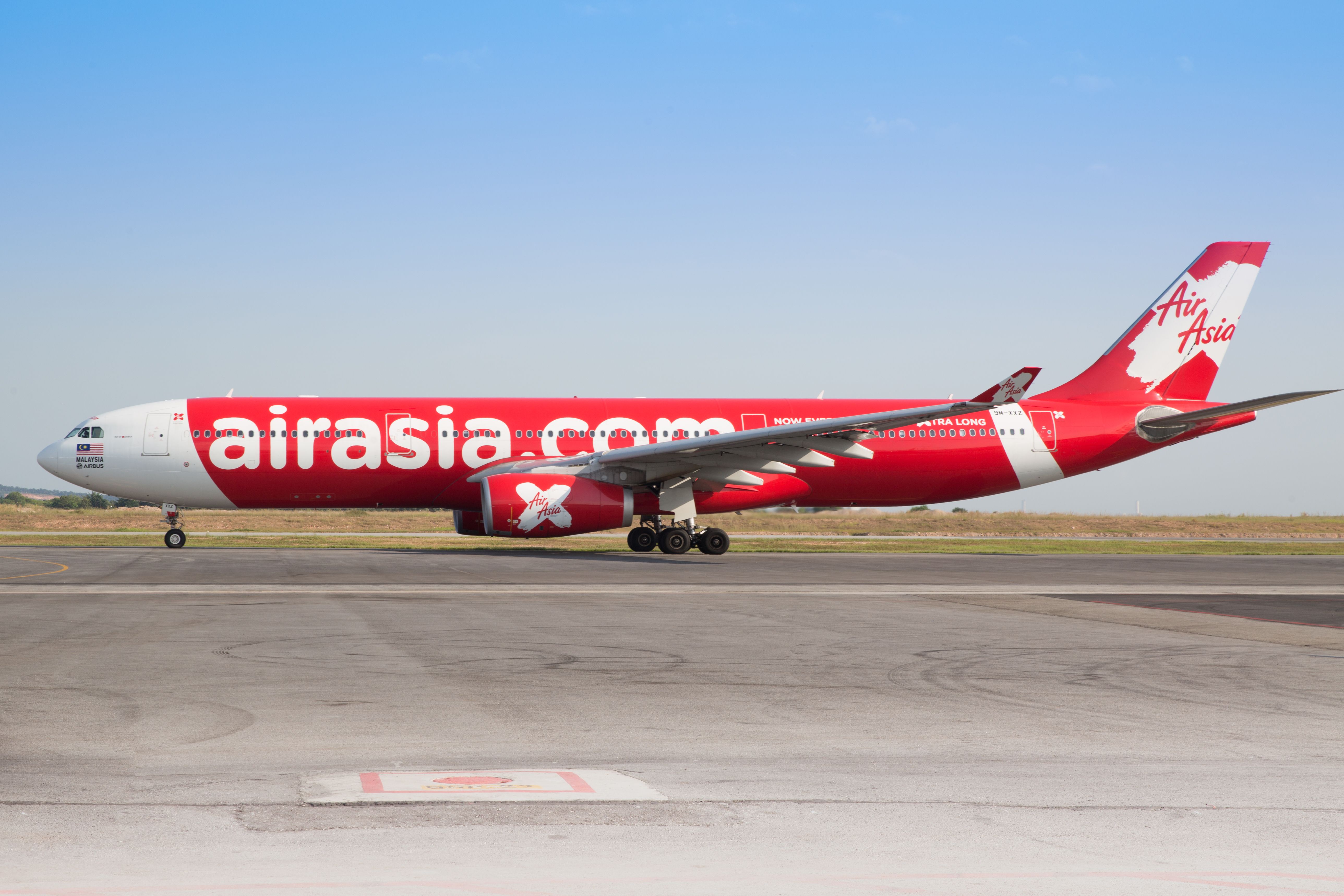
Related
Flight Review: AirAsia X Airbus A330 Quiet Zone’s A Hidden Gem
If you are booking a flight with AirAsia X make sure to choose the Quiet Zone when selecting seats, it is a haven of tranquility on a busy widebody.

